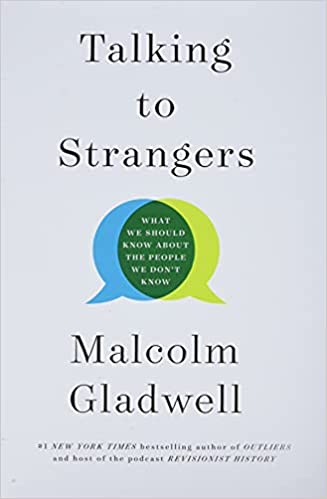
Vintage Gladwell as he describes a seemingly ordinary encounter or observation from which any reasonable person would draw an obvious conclusion and then takes a deep dive into social psychology to demonstrate how wrong we (all) are. Talking to Strangers opens with the recorded encounter in rural Texas between a white state trooper and a young Black woman, Sandra Bland, is pulled over for failing to signal when changing lanes. Failing to signal, that is, after a state trooper has turned on his flashing lights behind her insisting she pull over. Not surprisingly, the encounter degenerates, the cop loses his cool, Bland is handcuffed, and after three days in jail (for failing to signal a lane change?) commits suicide.
The obvious conclusion is systemic racism and patent stereotyping by the trooper. In fact, we even think we know Sandra Bland. Now comes all the back story, carefully unpackaged to describe what happens when two people who don’t know one another meet. All people carry preconceived perceptions including what Gladwell describes as something called, “default to truth.” We believe what people tell us. There are evolutionary advantages to trust, even when we are being lied to and have been told we are being lied to. (Explanations for how and why Trumpians believed and still believe are unmissable.) There are additional lessons about how policing came to rely on a system of pull-over-and-suspect. And why access to instruments of suicide increase rates of suicide, though, quite surprisingly, Gladwell says nothing about Bland’s previous suicide attempts. This despite devoting chapters to predictors of suicide rates.
The conclusion Gladwell draws is that when two people meet who don’t know one another well (and sometimes even when they do) they draw assumptions which can lead to terrible outcomes. Not only isn’t that a terribly new idea, but Gladwell offers almost nothing by way of a solution.